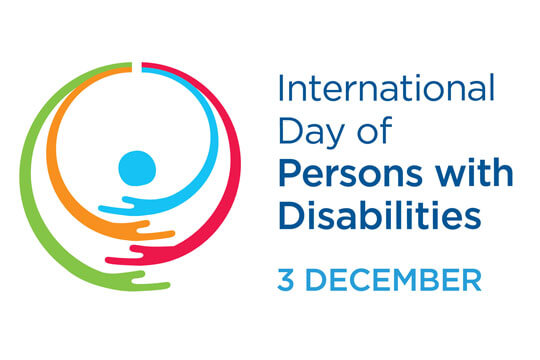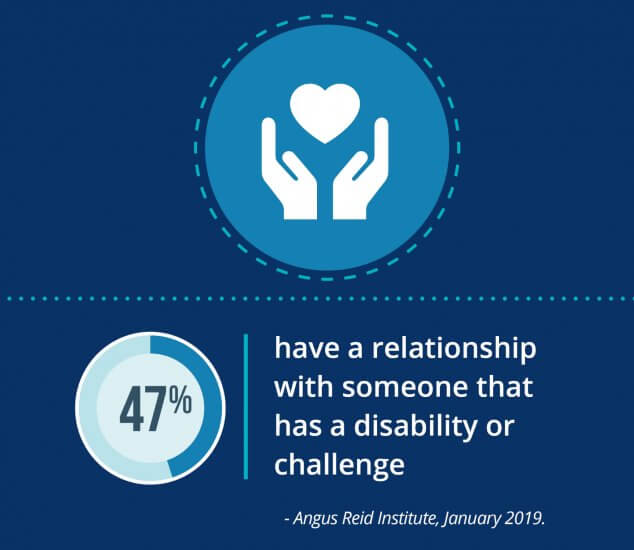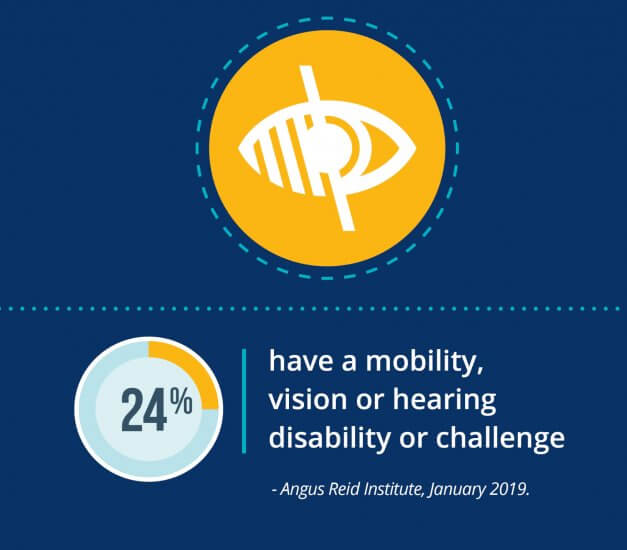

International Day of Persons with Disabilities
Dec. 3 is known around the world as International Day of Persons with Disabilities
What is International Day of Persons with Disabilities?

According to the United Nations (UN), the purpose of International Day of Persons with Disabilities is to promote the full and equal participation of persons with disabilities. It aims to promote the rights and well-being of persons with disabilities and to take action for the inclusion of persons with disabilities in all aspects of society.
The UN states that more than one billion people, or about 15 per cent of the world’s population, live with some form of disability; 80 per cent live in developing countries. Evidence and experience shows that when barriers to inclusion are removed and persons with disabilities are empowered to participate fully in societal life, the entire community benefits.
Accessibility and inclusion is about more than just making physical spaces accessible, it’s also about digital spaces, access to education, general awareness about how to make people in your lives feel included. People may be living with a disability that they aren’t ready to disclose, for fear of stigma, or having expectations lowered.
Learn more by watching Carrie Anton, AU’s accessibility services co-ordinator on CTV Morning Live, Calgary.
Below, you’ll find some resources to help make the physical and digital spaces around you more inclusive and accessible for all.
Let's talk about inclusive language
Brad McCannell, vice-president, access and inclusion at the Rick Hansen Foundation, shares ways to ensure the language you are using is inclusive. Ensuring you are using “people-first” language helps everyone feel included. We are people first.
“We’re people … we’re people with disabilities,” McCannell said. “We’re people who are deaf, people who are blind, people who use wheel chairs. The important thing is, that we are people first.”
“An amazing thing will happen when you start referring to people with disabilities as people. You'll start to think of us as people. If you think of us as disabled people, the first thing you you think of is that we're disabled.”
– Brad McCannell, vice-president access and inclusion, Rick Hansen Foundation
Accessible Spaces 101

When was the last time you had trouble accessing a building? Were there too many steps, or no ramps? Perhaps there were no beacons alerting you that a doorway was coming, or a post right in the middle of the door. When you entered the building, were the directional signs clear?
PowerED™ by Athabasca University recently launched a new course called Accessible Spaces 101 in partnership with the Rick Hansen Foundation. This self-paced online course examines the impact of the social and physical environment on people with disabilities and introduces the application of universal design for creating meaningful access.
Accessible Spaces 101 is open to anyone who has an interest in understanding more about how building design can improve accessibility.
“The World Health Organization says that there’s over 1 billion people living with a disability today. Someone you know, or meet, or talk to may have a disability and you may not know it. It’s important for us to first understand that they may have a visible or invisible disability.”
– Carrie Anton, accessibility services co-ordinator
Accessibility Resources

When we discuss making spaces accessible, it’s not just physical spaces that need to be focused on. Here are some ways to make the digital world around you accessible for all.
- Types of assistive technology and information on the Duty to Accommodate
- How to create accessible documents and PDFs
- What to consider for accessibility within an online learning environment
- How accommodations are assessed at AU
- How learners can contact the team that makes up Accessibility Services by e-mail
Whether you are a learner or team member at AU, if you’re having accessibility issues with content, forms, platforms, or whatever it might be, please contact the Accessibility Services office by email.